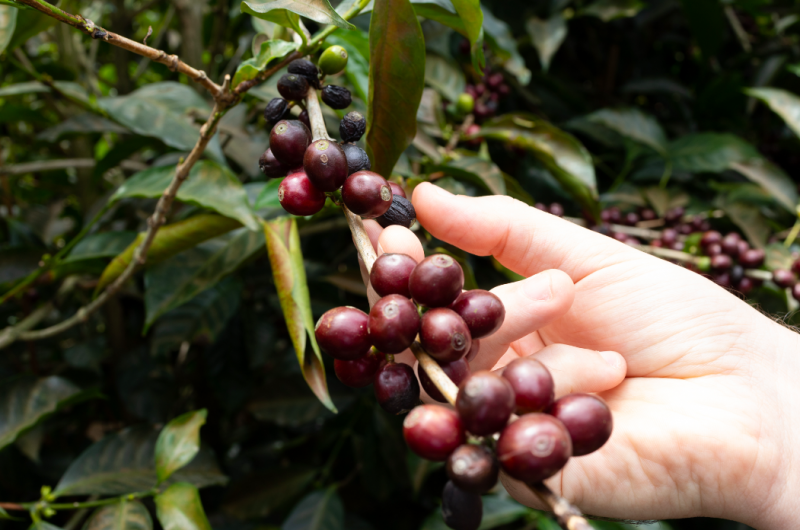Words and Images By Katie Burnett
The way a coffee is processed is an important part of shaping its flavour profile. Whether a coffee is clean and sweet, funky, fruity or floral can be determined when the coffee is being processed. It is an important sector of knowledge for the curious coffee consumer.
Coffee processing is the method in which a coffee is treated in order to prepare it to be shipped and roasted. Some of the most commonplace processing methods are washed, natural and honey.
Before understanding the impacts of these various methods, it’s important to understand the anatomy of the coffee seed (what we call the “bean”) and its surrounding counterparts. On a coffee tree, the coffee fruit appears as a small, red berry-like fruit that grows in bunches along the branches of the tree. When the coffee is ripe, the fruit is bright red or purple.

The coffee bean is inside this cherry, with two beans to each fruit. The bean is surrounded by a sticky mucilage layer and then the outer fleshy layer, which is the pulp and lastly, the skin of the cherry.
For a washed, the coffee is picked from the tree at peak ripeness and the entire cherry and mucilage is removed from the bean before the drying process begins. This process typically yields coffees that are described as clean and balanced. This method is the purist’s favourite. It is argued when a coffee is washed properly, it is the best way to purely taste terroir and varietal because the cherry and mucilage are completely stripped from the bean and do not have any impact on its flavour. You are purely tasting the bean. There is no influence on flavour from the cherry and it's fermentation, unlike a natural or honey processed coffee. The fermentations that occur to create a natural or honey coffee are difficult to control and require expert monitoring, making washed coffees the most consistent to produce.
A naturally processed coffee is produced when the cherry is left on the seed during the drying process. Drying of any processing method can occur in the shade or in the sun, each yielding slightly different results (shade-dried coffees take longer to dry, but are considered to maintain the coffee’s characteristics better).
As the mucilage and cherry begin to dry and slightly ferment, and the cell structure of the bean begins to break down, the bean is penetrated by the flavours of the cherry. If you think about the acidity and flavours of dried berries, it is easier to understand why natural coffees are slightly “funkier” than washed coffees. The naturals are exposed to these flavours from the cherry where the washed coffees are not.
Cascara is the dried pulp of the coffee cherry, after being removed from the coffee, it is often used to make tea. If you have tasted cascara tea, you are familiar with the bright sweetness of the cherry flesh, these are the flavours that the natural coffees will embody.
It is crucial for the fermentation to be closely monitored in order to achieve the desired flavours. When dealing with fermentations, many factors need to be considered: temperature, light exposure, agitation and pressure all have significant effects on the progress of a fermentation. For example, a shade-dried natural that is turned and moved often will yield different results to a sun-dried natural that is never agitated.
A honey processed coffee is ‘in between’ these two processing methods. A honey processed coffee will have the fleshy pulp removed before drying but the mucilage will still be attached. Many producers have different definitions of honey processing and they differ in terms of the amount of mucilage left on the beans. Coffees will often go through a depulper before they are dried, at this stage the producer must decide how much mucilage to remove. Depending on how much of the mucilage is removed, a producer will label their lot red, black, yellow or gold honey.
After some time into the drying process, the mucilage breaks down into a dark, sticky and thick liquid (this is where the name “honey” comes from), giving the coffee beans a sweet and balanced flavour.
The world of processing and fermentations is a complex but exciting one, as producers are using these basic rules of processing to create new flavours in coffee. As technology and equipment are improving, fermentations are being controlled in unforeseen ways and producers can be creative and have their signature processing methods. Additionally, more and more factors in the process are being improved upon. For example, the quality of the water being used to wash the coffee or the material the coffee sits on during drying.